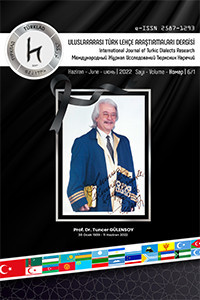PEŞƏYƏ GÖRƏ DİLİN SOSİAL DİFERENSİALLAŞMASI
Dilin sosial diferensiallaşmasının əsas istiqamətlərindən birini müxtəlif peşələrə aid
insanların dil xüsusiyyətləri təşkil edir. Hər bir peşənin özünəməxsus leksikası mövcuddur.
Onu da qeyd edək ki, dünyada bütün dillərdə peşə leksikasının inkişafı eyni formada özünü
göstərmir. İnkişaf etmiş cəmiyyətlərdə peşələrə aid leksika daha zəngindir.
Bu tədqiqatın əsas məqsədi dilin peşəyə görə diferensiallaşmasının əsas əlamətlərini
üzə çıxartmaqdır. Dilin peşələrə görə diferensiallaşmasının əsasında peşə-sənət leksikası durur.
Bunun özündə də bir çox mübahisəli məsələlər vardır. Əsas müqayisəli məqam isə onların
qarşılaşdırılması və ya eyniləşdirilməsi ilə bağlıdır. Bu qarşılaşdırmada diqqət çəkən məqamları
aşağıdakı istiqamətlərdə göstərmək mümkündür: peşə-sənət leksikası və jarqonlar, peşə-sənət
leksikası və dialektizmlər, peşə-sənət leksikası və terminlər.
Dilin sosial peşə diferensiallaşması digər dil diferensiallaşmalarından bir çox cəhətlərə
görə də fərqlənir. Peşə dillərinin intensiv inkişafı, yeni peşələrin yaranması ilə dilin leksik
tərkibinin dəyişməsini əsas fərqləndirici əlamətlər saymaq olar. Dil səviyyələri üzrə isə leksik
səviyyədən başqa, sintaktik səviyyədə, həmçinin mətnin komponentlərinin qurulması
baxımından da fərqlər müşahidə olunur.
Anahtar Kelimeler:
Dil, leskika, Peşə, Mədəniyyət, Termin.
Social differentiation of language by profession
One of the main directions of social differentiation of language is the language
peculiarities of people related to the different professions. Any profession has its specific
vocabulary. It should be noted that the development of the professional vocabulary in all
languages of the world does not manifest itself in the same form. Professional vocabulary in the
developed societies is richer.
The main purpose of the research is to identify the basic features of the language
differentiation by profession. Professional vocabulary is the basis of the language differentiation
by profession. There are quite a lot of contentious issues here. The main moot point is
connected with their comparison and identification. The points that are worthy of attention can
be shown in the following directions: professional vocabulary and jargons, professional
vocabulary and dialect words, professional vocabulary and terms.
The social professional differentiation of language differs from the other language
differentiations in many features. The intensive development of professional languages,
formation of the new vocabulary due to the emergence of new professions can be considered the
main distinctive features. As for the language levels, there are also differences at the syntactic
level, from the standpoint of formation of components of text, except the lexical level.
Keywords:
Language, vocabulary, profession, culture, term,
___
- Arnold, İ.V. (1959). Leksikologiya Sovremennoqo Anqliyskoqo Yazıka. Moskva: İzdatelstvo literaturı na inostrannıx yazıkax.
- Blumfıld, L. (2014). Dil. Bakı: Prestij.
- Cəfərov, S. (2007). Müasir Azərbaycan dili. Leksika. Bakı: Şərq-Qərb.
- Drevnetyurkskiy slovar (1969). Leninqrad: Nauka.
- Elistratov, V.S. (2000). Slovar moskovskoqo arqo (Elektronnıy resurs).
- Əliyev, Ə. (1998). Azərbaycan Dilində Jarqonlar. Bakı: Hərbi Nəşriyyat.
- Əsgərov, H. (2006). Azərbaycan Dilində Maddi Mədəniyyət Leksikası. Bakı: Nurlan.
- Həsənov, H. (2005). Müasir Azərbaycan Dilinin Leksikası. Bakı: Bakı Universiteti.
- Koduxov, V.İ. (1974). Obşeie Yazıkoznanie. Moskva: Vısşaya Şkola.
- Qurbanov, A. (1985). Müasir Azərbaycan Ədəbi Dili. Bakı: Maarif.
- Rəcəbli, Ə.(2004). Sosiolinqvistika. Bakı: Nurlan.
- Serebrennikov, B. (1970). Obşeie Yazıkoznanie. Formı Suşestvovaniya, Razvitie i Funksii Yazıka. Moskva: Nauka.
- Şor, R. (1926). Yazık i Obşestvo. Moskva: Rabotnik Prosveşeniya.
- Yalçın, S. K. ve Şengül, M. (2007). Dilin İletişim Süreci İçerisindeki Rolü ve İşlevleri. Turkish Studies, S. 2/2. 749-769.
- http://www.philology.ru/linguistics2/belikov-04.htm
- Başlangıç: 2017
- Yayıncı: Ahmet BURAN
Sayıdaki Diğer Makaleler
BAĞIMSIZLIK DÖNEMİ ÇAĞDAŞ ÖZBEK ŞAİRLERİNDEN AZAM ÖKTEM VE EDEBÎ KİŞİLİĞİ
Mukhabbat KURBANOVA, Mustafa KORKMAZ
TÜRKMEN EDEBİYATINDA BİR FIKRA TİPİ OLARAK ATA KÖPEK MERGEN: HAYATI VE FIKRALARI
Erol SAKALLI, İbrahim Kubilay ŞİMŞEK
IĞDIR İLİ AĞIZLARININ KARGIŞLARI (BEDDUALAR) ÜZERİNE BİR İNCELEME
Məhəmmədəli CAMALZADƏ, Çevirmen: Gunel ORUCOVA
AZƏRBAYCAN DİLİNİN QARABAĞ DİALEKTİNDƏ ARXAİK SÖZLƏR
ÇAĞATAY TÜRKÇESİ SÖZLÜKLERİNİN LEKSİKOİSTATİSTİKSEL BİR DEĞERLENDİRMESİ
KAZAK YAZAR MUHTAR MAGAVİN’İN HAYATI VE EDEBÎ KİŞİLİĞİ
